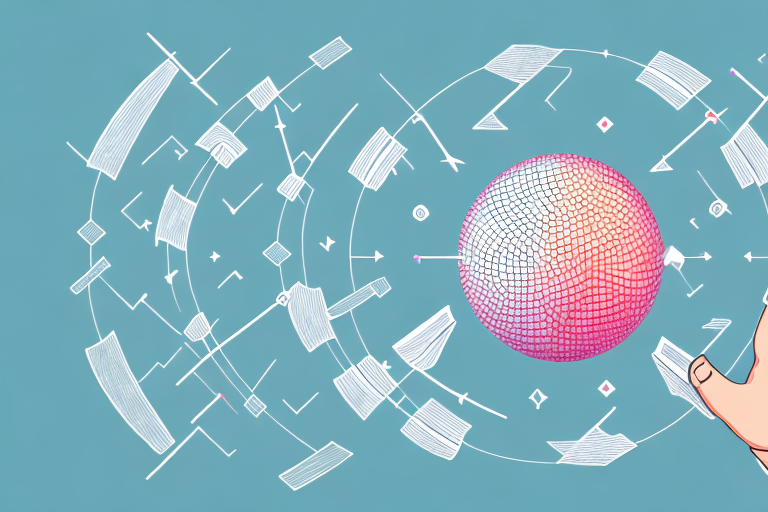Trigger points are painful areas of muscle that are often associated with tension and stress. These trigger points can cause pain, stiffness, and even limit range of motion. Fortunately, there are ways to address these issues and alleviate discomfort. One of the most popular and effective methods of relieving trigger point pain is by using a trigger point ball. In this article, we will explore how to use a trigger point ball for maximum benefits and optimal results.
Understanding Trigger Points and Their Effects on the Body
Before delving into the specifics of how to use a trigger point ball, it is important to have a basic understanding of what trigger points are, and how they impact the body. Trigger points are knots or tight spots in muscles that may develop as a result of stress, overuse, or trauma. These knots can cause pain, discomfort, inflammation, and even lead to headaches, back pain, and other health problems.
Trigger points can cause the muscle fibers to shorten or become weakened, which may limit range of motion and mobility. This can cause the body to compensate, leading to muscle imbalances, poor posture, and even chronic pain. Regular use of a trigger point ball can help alleviate trigger point pain, release tension, and promote healing.
It is important to note that trigger points can also be caused by poor nutrition, dehydration, and lack of sleep. These factors can contribute to muscle tension and inflammation, making it more likely for trigger points to develop. Therefore, it is important to maintain a healthy lifestyle and address any underlying health issues in order to prevent trigger points from forming in the first place.
Choosing the Right Type of Trigger Point Ball for Your Needs
There are many different types of trigger point balls on the market, each with unique features and benefits. When choosing a trigger point ball, it is important to consider your needs and preferences. Some people prefer softer balls for more gentle pressure, while others may require a firmer ball for deeper penetration.
Other factors to consider include size and texture. Smaller balls may be better for more targeted areas, while larger balls may be better for overall muscle tension. Textured balls can provide additional stimulation and may be helpful for individuals with more severe trigger point pain.
It is also important to consider the material of the trigger point ball. Some balls are made of foam, while others are made of rubber or plastic. Foam balls are typically softer and more gentle, while rubber or plastic balls may be firmer and provide more intense pressure. Additionally, some materials may be more durable and long-lasting than others, which is important to consider if you plan on using the ball frequently.
Preparing Your Body for Trigger Point Release with Warm-Up Exercises
Before using a trigger point ball, it is important to warm up your body with stretching or other light exercises. This can help increase blood flow and promote relaxation. It is also important to stay hydrated during and after a trigger point release session to help flush out toxins and reduce inflammation.
Additionally, it is recommended to start with a lower intensity trigger point ball and gradually work your way up to a firmer ball as your body becomes more accustomed to the pressure. It is also important to listen to your body and not push through any pain or discomfort during the release process. If you experience any sharp or intense pain, it is best to stop and consult with a healthcare professional.
Techniques for Using a Trigger Point Ball on Different Areas of the Body
When using a trigger point ball, it is important to target specific areas that are experiencing trigger point pain. Some common areas include the neck, shoulders, back, and feet. To use the ball, simply place it against the targeted area and apply pressure using your body weight or by rolling it over the area.
It is important to start slowly and gradually increase pressure as your body becomes accustomed to the ball. It is also important to breathe deeply and relax as you work through the tension in your muscles.
Another important area to target with a trigger point ball is the hips. Many people experience tightness and discomfort in their hips due to prolonged sitting or standing. To use the ball on your hips, lie on your side with the ball placed under your hip and slowly roll back and forth. You can also try sitting on the ball and rolling it around the hip area. Remember to breathe deeply and relax as you work through any tension in your muscles.
Common Mistakes to Avoid When Using a Trigger Point Ball
While using a trigger point ball can be highly effective in releasing tension and easing pain, there are some mistakes that beginners may make that can actually worsen the problem. One common mistake is applying too much pressure too quickly, which can cause pain and inflammation.
Another mistake is working on a specific area for too long, which can lead to bruising and soreness. It is important to take breaks and work on different areas to avoid overworking one specific area of the body.
Additionally, it is important to use the trigger point ball correctly to avoid further injury. Make sure to position the ball on the muscle and not on a bone or joint. It is also important to use the ball on a flat surface to ensure stability and control. Lastly, do not use the ball on an open wound or if you have a medical condition that may be aggravated by the pressure.
Combining Trigger Point Release with Other Forms of Self-Care for Optimal Results
To get the most out of your trigger point ball, it is important to combine it with other forms of self-care. This can include stretching, yoga, massage, and even meditation. Through these practices, you can enhance flexibility, blood flow, and relaxation, which can support overall health and wellness.
Tips for Incorporating Trigger Point Release into Your Daily Routine
Using a trigger point ball can be done anytime, anywhere. Whether you are at home or at work, taking a few moments to release tension and promote relaxation can be highly beneficial for your health and well-being. Consider incorporating trigger point release into your daily routine, such as during breaks at work or before bed.
How Often Should You Use a Trigger Point Ball for Best Results?
The frequency with which you use a trigger point ball will depend on your individual needs and preferences. Some people may benefit from daily use, while others may only need to use the ball a few times a week. It is important to listen to your body and adjust your usage as needed. If you experience pain or discomfort after using the ball, it may be best to decrease frequency or intensity.
Understanding When to Consult a Professional for Trigger Point Therapy
If you have chronic pain or discomfort that is not alleviated by using a trigger point ball, it may be time to seek professional help. A physical therapist or massage therapist can provide additional guidance and support to help alleviate pain, improve mobility, and promote overall health and wellness.
In conclusion, using a trigger point ball can be highly effective in alleviating trigger point pain, promoting relaxation, and enhancing overall well-being. By following these tips and techniques, you can get the most out of your trigger point ball and achieve maximum benefits for your body and mind.





